Learn how to dye pasta with food coloring for quick and easy sensory play! Colored pasta makes an awesome sensory bin filler and one of our favorites. We will show you how to dye pasta easy, so it is ready to use the same day. Our simple how to dye pasta recipe makes beautiful colors for whatever play theme or craft activity you choose.

How To Dye Pasta For Crafts And Sensory Play
Our simple how to dye pasta recipe makes for beautiful colored pasta for your chosen theme. Also, check out our sensory bin guide for great ways to use your colored pasta!
Here’s how to color pasta with food coloring for sensory activities. All it takes is dried pasta, food coloring and vinegar. Yes, you can dye pasta without vinegar. We include an easy alternative for you below.
Kids will have a blast digging their hands into a colored pasta sensory bin! Dying dried pasta for crafts or sensory play is such a simple recipe! Prep and make it in the morning and you can set up your sensory bin for an afternoon activity.
Also, make sure to check out more dyed play materials:
Watch the Video!
Why Make Sensory Bins?
Are sensory bins worth it? Yes, they are worth it. The more basic you keep the sensory bin, the better off you are. Remember, you create a tactile experience for your kids, not a Pinterest image. While we have fantastic pictures of sensory bins, they only stay that way for a minute!
Sensory bins are awesome hands-on tools for children to learn about their world and senses! Sensory play may calm a child, focus a child, and engage a child.
Here’s what children can learn from sensory bins:
Practical Life Skills ~ Sensory bins let a child explore, discover and create play using practical life skills (dumping, filling, scooping) and learn valuable play skills.
Play Skills {emotional development} ~ For both social play and independent play, sensory bins allow children to play cooperatively or side by side. My son has had many positive experiences with other children over a bin of rice!
Language Development ~ Sensory bins increase language development by experiencing all there is to see and do with their hands, which leads to great conversations and opportunities to model language.
Understanding 5 Senses ~ Many sensory play bins include a few of the 5 senses! Imagine a bin of brightly colored rainbow rice: touch the loose grains against the skin, see the vivid colors as they mix together, and hear the sound of sprinkling over a plastic container or shaken in a plastic egg!
Did you add a scent like vanilla or lavender? Please do not taste uncooked rice, but there are plenty of sensory play options that you use edible ingredients like our worms in magic mud!
However, sometimes sensory bins can create a little or a lot of mess! This is where we have you covered. Read on for all the tips and tricks for making setting up and packing away sensory bins much easier!
Get Your Free Quick Start Sensory Bin Guide
How To Dye Pasta
Supplies:
- Small dried pasta
- Vinegar
- Food Coloring
- Fun sensory bin items like these unicorns.
- Scoops and small cups for dumping and filling
Instructions:
STEP 1: Measure 1 Cup of pasta {we like this mini pasta best!} into a container.
NOTE: You can make a bigger quantity of dyed pasta if desired. Adjust the measurements. Or you can do several colors of pasta in different containers and mix them together for a rainbow pasta theme!
STEP 2: Next add 1 Teaspoon of Vinegar.
Don’t want to use vinegar? You could add lemon juice instead of vinegar.
STEP 3: Now add as much food coloring as desired (deeper color= more food coloring). You could also make several shades of the same color for a fun effect!
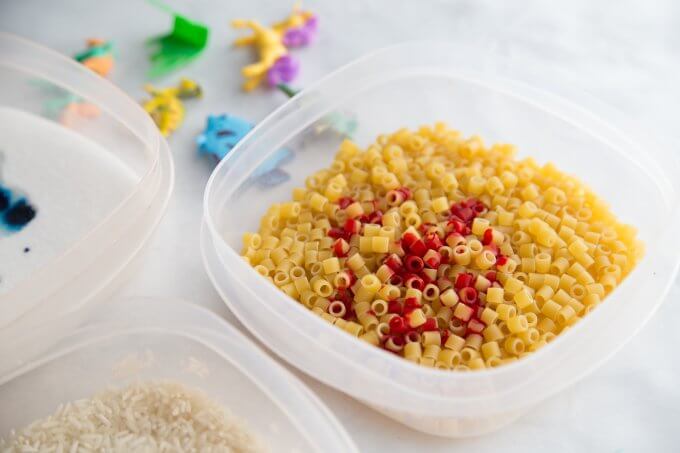
STEP 4: Cover the container and SHAKE vigorously for a minute or two. Check to see if the past is evenly coated!
STEP 5: Spread on paper towel or plate to dry in an even layer.
STEP 6: Once the colored pasta is dry, transfer to a bin for sensory play or use for a craft activity.
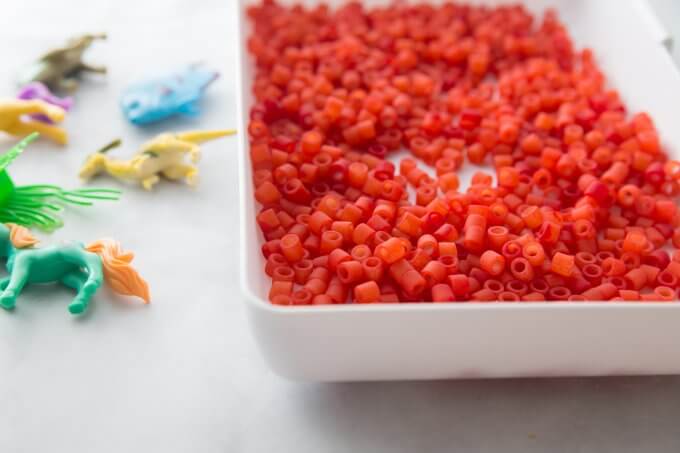
Tips For Dying Dried Pasta
- The pasta should be dry in an hour if you stick to the one cup per paper towel. I find the color is distributed the best this way too.
- For some sensory bins, I have made graded shades of colored pasta for a fun twist. This has also allowed me to experiment with how much food coloring to use per cup of pasta to achieve desired shades!
- Store your dyed pasta in gallon zip lock bags when finished and reuse often!
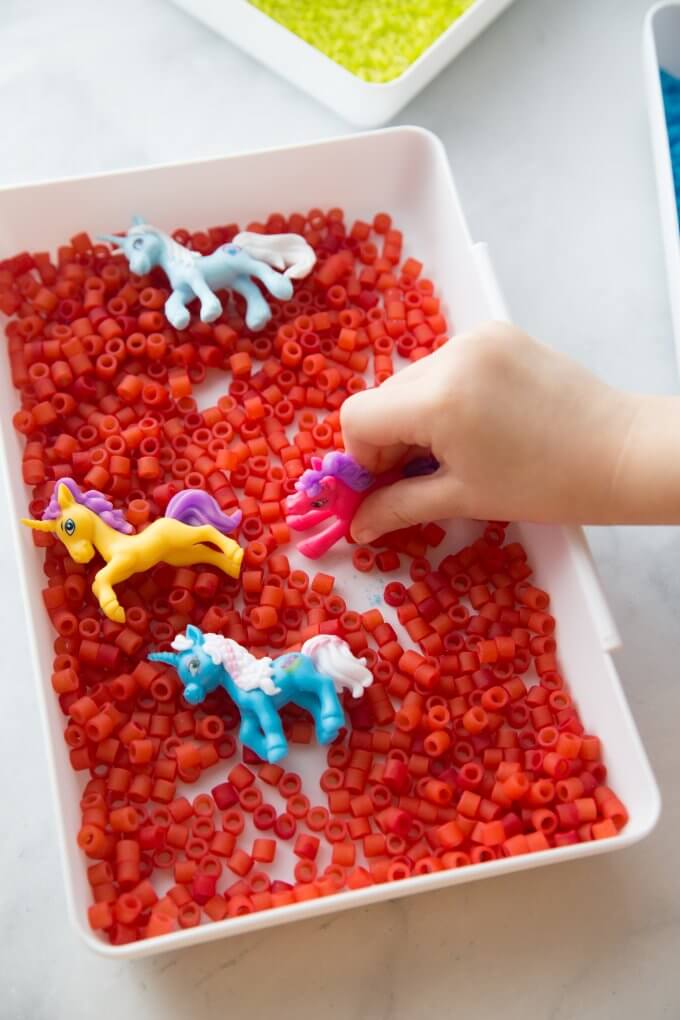
Fun Ways To Use Colored Pasta
I hope I have inspired you to try our quick and easy method for dying pasta. It really is simple and provides tons of awesome play for your child. The benefits of sensory play are numerous!
We enjoy simple counting games with our colored pasta these days. Also, this pasta size is perfect for I Spy sensory bottles. Create a new theme for your sensory math games or I Spy bottles with the changing seasons or holidays!
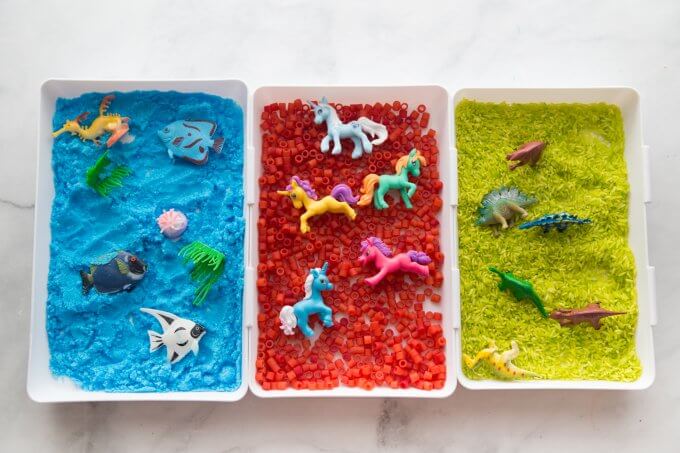
Check Out These Helpful Sensory Bin Resources
There’s so much more to learn about sensory bins and sensory play.
- Sensory Bin Ideas and Themes
- How To Make A Sensory Bin
- Best Sensory Bin Fillers
- Non Food Sensory Bin Fillers
- Rice Sensory Bin Ideas
- How To Clean Up A Sensory Bin In A Snap
- Sensory Play Recipes You Can Use
Click on the image below or on the link for more fun and easy sensory activities for kids!


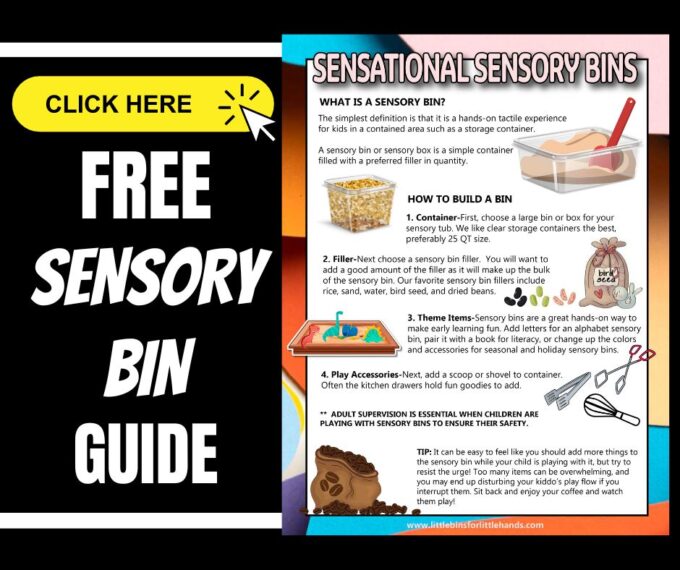
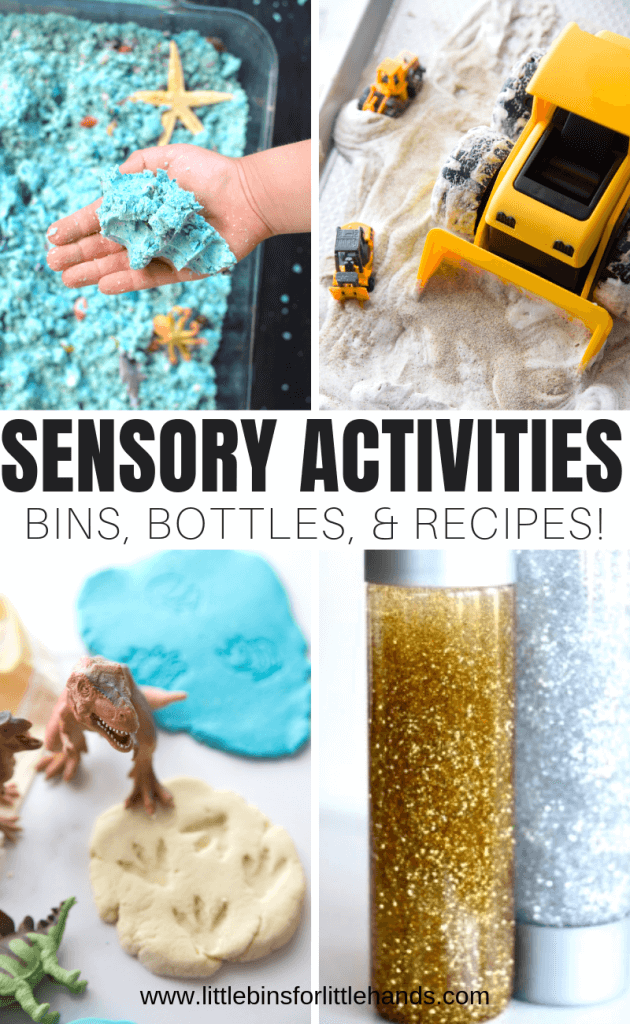






I work in an early childhood program and came across you website. I would love to share your website on my Facebook coaching corner. Could I please have your permission to share? I am sure the teachers will enjoy your site as much as I have.
That’s fine!